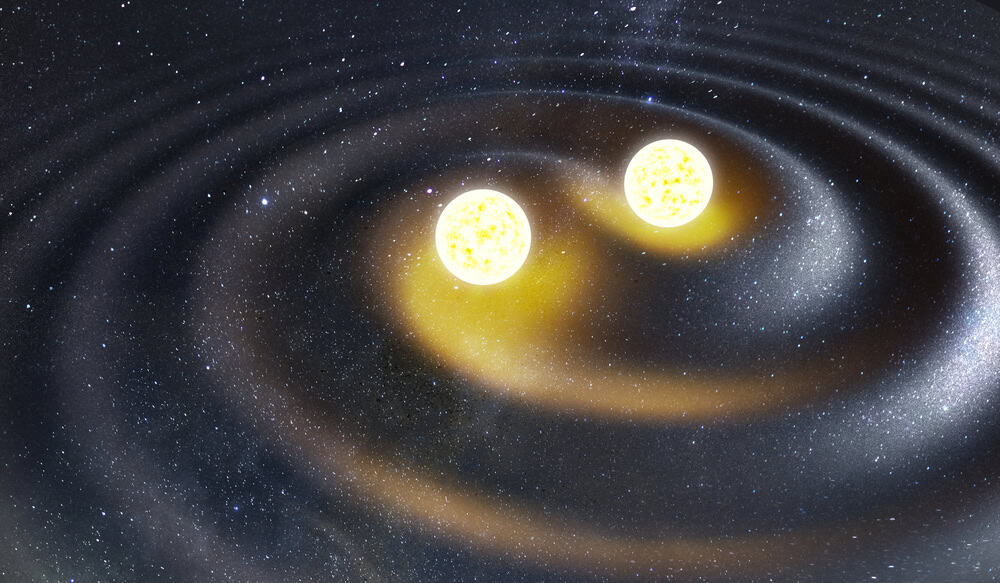Every once in a while, I stumble across real space facts that sound like they were dreamed up by a science fiction writer. (Which, to be honest, makes me a little jealous.) The universe is full of wonders that sound too strange to be real—stars that hum, planets made of diamond, and clouds of alcohol drifting through the galaxy. Yet all of these are real, confirmed by scientists with very serious equipment and even more serious expressions.
Here are a few of my favorite “you’ve got to be kidding me” space facts.

1. There’s a “heartbeat” between two stars
About 5,800 light-years away, in the constellation Cygnus, astronomers discovered a pair of stars nicknamed the “heartbeat stars.” They orbit each other so closely that their gravitational pull actually distorts their shapes—stretching them like cosmic rubber bands every time they pass.
The result? Their brightness rhythmically pulses in a pattern that looks just like an EKG reading. The stars literally “beat” in time with each other. If that isn’t both eerie and romantic, I don’t know what is.
2. There’s a massive cloud of alcohol floating in space
About 10,000 light-years away in the constellation Aquila, there’s a giant cloud of ethanol gas big enough to fill 400 trillion trillion pints of beer. (That’s a lot of happy hour.)
Of course, it’s spread thin across space—not something you could scoop into a glass—but it’s one of the many organic molecules found floating around the galaxy. It’s oddly comforting to know that the building blocks of life—and a decent cocktail—are out there among the stars.
3. One planet is made almost entirely of diamond
Speaking of diamonds, there’s an exoplanet called 55 Cancri e that’s about twice the size of Earth and composed largely of carbon. Under the right pressure and temperature, that carbon could form—yep, you guessed it—diamond.
Astronomers call it the “diamond planet.” If we could somehow mine it (which we can’t), the sheer amount of gemstone material would completely crash the diamond market back home. It’s a nice reminder that sometimes the universe has a flair for luxury.
4. There’s a planet where it rains glass
On HD 189733b, the weather forecast is downright violent. Winds there reach 5,400 miles per hour, and it literally rains shards of glass sideways. The planet’s atmosphere is filled with silicate particles, which condense and fall like microscopic blades.
When I first read that, I immediately thought, “Yep, definitely not a place for a vacation.” But if you write sci-fi, it’s perfect inspiration for a world where beauty and danger collide in every storm.
5. Some stars sing
Okay, not in the way we think of singing, but certain stars really do “hum.” The pressure waves inside them cause vibrations that can be translated into sound. Astronomers can’t hear them directly in space (sound doesn’t travel through a vacuum), but when those oscillations are converted into audio, stars produce eerie, melodic tones.
It’s like the universe has its own secret symphony—one we can only listen to through the language of science.
6. There’s a “rogue planet” just wandering around space
Not every planet stays loyal to its star. Some break free entirely and drift through space alone, without orbiting anything. These “rogue planets” are like cosmic nomads, floating silently between the stars.
I find that both haunting and beautiful—like the idea of a world with no sunrise, no seasons, just endless night. It’s the kind of image that could inspire an entire story.
Final Thoughts
Space is full of wonders that seem to break the rules of reality—and yet, they’re all real. The more we learn, the more it feels like the line between science and science fiction is just a little blurrier than we thought.
Maybe that’s why I love writing science fiction so much: it’s not about inventing impossibilities, but exploring the edge of what might already be true.
Which of these weird space facts surprised you the most? Drop a comment below—I’d love to know which one could spark your next story idea.
